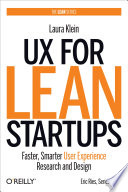

Hypothesis-driven development is a key concept that encourages teams to formulate hypotheses about their product and test them rigorously. The book suggests that every feature or design decision should be treated as a hypothesis that needs validation through user feedback. This approach helps in identifying what works and what doesn’t early in the development process. By treating product development as an experiment, startups can make data-driven decisions that enhance the likelihood of success and reduce the chances of costly failures.
Continue readingUser-Centered Design (UCD) is fundamental in creating products that truly meet the needs of users. This approach involves understanding users' needs, behaviors, and pain points through research and testing. By prioritizing user input throughout the design process, startups can develop solutions that resonate with their target audience. The book emphasizes the importance of empathy and iterative design, which allows teams to refine their products based on real user feedback rather than assumptions. This iterative approach helps in minimizing the risk of building a product that misses the mark and ensures that the final offering is both useful and desirable.
Continue readingThe Lean Startup methodology focuses on efficiently building a startup by using validated learning, rapid prototyping, and iterative design. The book outlines how UX design fits within this framework, emphasizing the need for startups to test their ideas quickly and gather feedback. By employing techniques like A/B testing and user interviews, startups can validate their hypotheses and make informed decisions about product development. This approach reduces waste and accelerates the learning process, allowing startups to pivot or persevere based on user insights.
Continue readingRapid prototyping is a crucial technique discussed in the book, which involves creating quick and inexpensive versions of a product to test and gather feedback. This allows startups to explore various design options and functionalities without committing significant resources. The authors advocate for low-fidelity prototypes, such as sketches or wireframes, which can be easily modified based on user feedback. This iterative process enables teams to refine their concepts and ensure they are aligned with user needs before investing in more complex and costly development.
Continue readingThe book highlights the importance of collaboration among different team members, including designers, developers, marketers, and other stakeholders. By fostering a culture of collaboration, startups can leverage diverse perspectives and expertise, leading to more innovative solutions. Cross-functional teams can work together to ensure that user experience is considered at every stage of the product development process. This holistic approach not only improves the product but also enhances team dynamics and communication.
Continue readingContinuous user feedback is essential for refining a product and ensuring it meets user expectations. The authors stress the importance of integrating user feedback loops throughout the development cycle. This can involve regular user testing sessions, surveys, and feedback forms that allow teams to gather insights on user experiences. By maintaining a strong connection with users, startups can adapt their products based on real-world usage and avoid common pitfalls associated with building in isolation.
Continue readingMeasuring success is crucial for any startup, and the book discusses various metrics and key performance indicators (KPIs) that can help teams assess the effectiveness of their UX design. The authors recommend focusing on actionable metrics that provide insights into user behavior and product performance. By establishing clear goals and measuring progress against them, startups can make informed decisions about future iterations and ensure they are on the right track towards achieving their objectives.
Continue reading